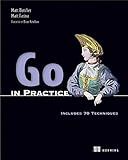Best Haskell Debugging Tools to Buy in November 2025
Debugging Haskell code can be done using various techniques and tools. Here are some common approaches:
- Print Statements: Insert print statements at different parts of your code to trace the flow and values of variables. For example, you can use print or putStrLn to display the values of variables or intermediate results.
- Interactive Debugging: GHCi, the interactive Haskell interpreter, provides a debugger called :trace. Run GHCi with the -debug flag and use :trace to stop at specified breakpoints or trace through the execution step by step.
- Type Errors: Pay attention to type errors that GHC (the Glasgow Haskell Compiler) generates. These error messages can often provide helpful information about the location and nature of the issue.
- Partial Functions: If your code uses partial functions, such as head or tail, consider replacing them with safer alternatives to avoid runtime errors. Libraries like safe or total provide safer variants of common functions.
- Debugging Tools: Use tools like GHC's profiling feature (-prof) to collect runtime performance statistics. This can help identify performance bottlenecks in your code.
- Unit Testing: Write small unit tests to verify the correctness of individual functions or modules. Tools like HUnit and QuickCheck provide frameworks for creating and running tests.
- Debugging Tools: Haskell also has various debugging libraries and tools available, such as HsDebug and Debug.Trace. These tools provide additional features and utilities to assist in debugging Haskell code.
Remember that Haskell's strong type system and pure nature help avoid many common bugs, but when issues do arise, the techniques mentioned above can help in locating and solving them. It's important to thoroughly understand and reason about your code to effectively debug Haskell programs.
What is a side effect in Haskell?
In Haskell, a side effect refers to any observable change or interaction that a function has with the outside world beyond its return value. Since Haskell is a purely functional language, it discourages side effects and promotes referential transparency, which means that a function's output should depend solely on its input and not on any external state or context.
Some examples of side effects in Haskell include:
- Modifying a global variable or mutable state.
- Reading from or writing to a file or a database.
- Printing to the console or reading user input.
- Making network requests.
- Throwing and catching exceptions.
To handle side effects in Haskell, the language has a monadic system called the IO monad, which allows developers to sequence and control the execution of side-effecting operations in a pure and safe manner. By confining side effects to the IO monad, Haskell maintains the purity and predictability of its functional code.
What is function composition in Haskell?
Function composition in Haskell is the act of combining two or more functions to create a new function. It allows the output of one function to be passed as the input to another function, without the need for intermediate variables or explicit constructions.
In Haskell, the . (dot) operator is used for function composition. The syntax for function composition is as follows:
(f . g) x = f (g x)
Here, f and g are two functions, and x is the input value. The dot operator composes f and g, meaning the output of [g x](https://devhubby.com/thread/how-to-change-default-output-file-of-g) is passed as the input to f.
Function composition helps in writing concise and readable code. It allows complex computations to be expressed as a series of simpler functions. For example, instead of nesting function calls or using intermediate variables, you can compose functions together:
result = (f . g . h) x
This composition means that function h is applied first to x, then the result is passed to g, and finally, the output of g is passed to f.
Function composition is associative and can be nested to compose any number of functions together.
How to curry functions in Haskell?
To curry a function in Haskell, you can make use of the curry or uncurry functions provided in the Prelude module.
curry takes a two-argument function and returns a curried function. It takes a function of type (a, b) -> c and returns a function of type a -> b -> c.
Here's an example of how to use curry:
add :: (Int, Int) -> Int add (x, y) = x + y
curriedAdd :: Int -> Int -> Int curriedAdd = curry add
In the above example, add is a function that takes a tuple of two integers and returns their sum. curriedAdd is a curried version of add, which takes two separate integer arguments instead.
Alternatively, uncurry takes a curried function and returns a function that takes a tuple as its argument. It has the opposite effect of curry.
Here's an example of how to use uncurry:
curriedAdd :: Int -> Int -> Int curriedAdd x y = x + y
add :: (Int, Int) -> Int add = uncurry curriedAdd
In the above example, curriedAdd is a curried function that takes two separate integer arguments and returns their sum. add is an uncurried version of curriedAdd, which takes a tuple of two integers instead.
What is a pure function in Haskell?
A pure function in Haskell is a function that always produces the same output for the same input and has no side effects.
In other words, a pure function does not depend on or modify any shared state, and it does not perform any I/O operations. It only takes inputs and returns outputs, without causing any observable changes in the program's environment.
Pure functions are deterministic, meaning that they will always return the same result given the same inputs. This property makes pure functions easier to reason about, test, and understand.
An example of a pure function in Haskell would be the following function that calculates the square of a number:
square :: Int -> Int square x = x * x
This function takes an integer x as input and returns the square of x. It always produces the same output for the same input, and it does not have any side effects.






